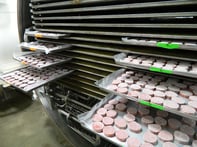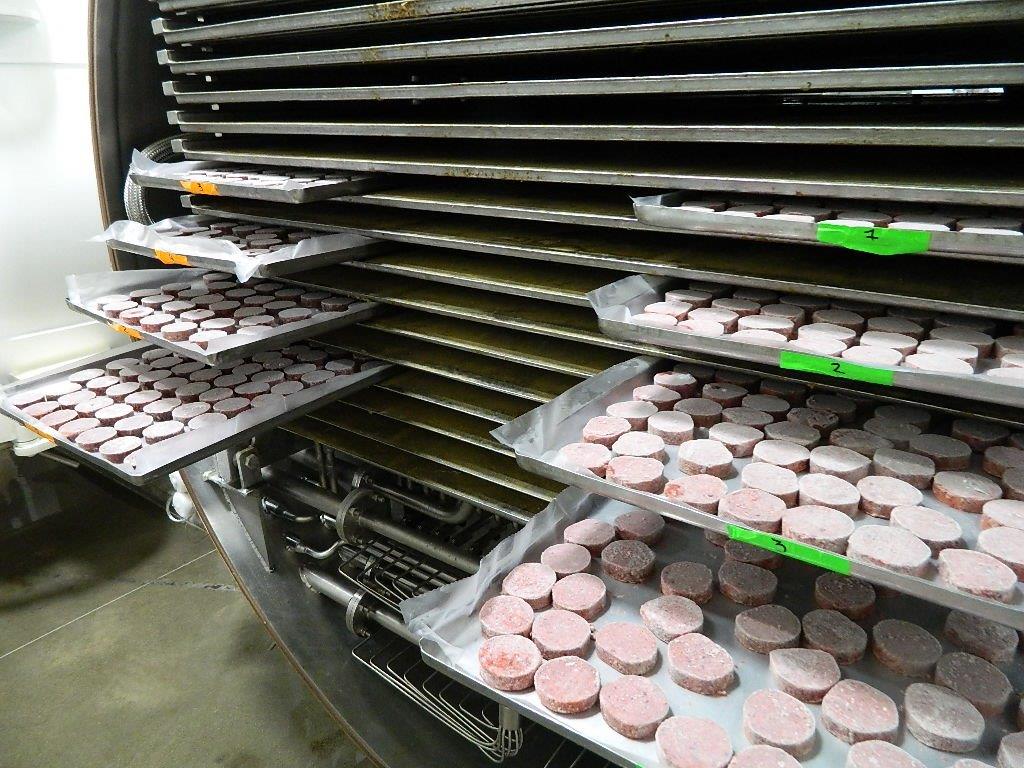 Preparation of products you want to freeze dry can have a big impact on how the product will turn out. If the product is too big or too small, or if it is not completely frozen, the outcome could be very frustrating. There are a few things to consider when looking at the preparation before loading the freeze dry and they are the freezing of products and the weight verses the volume in the trays.
Preparation of products you want to freeze dry can have a big impact on how the product will turn out. If the product is too big or too small, or if it is not completely frozen, the outcome could be very frustrating. There are a few things to consider when looking at the preparation before loading the freeze dry and they are the freezing of products and the weight verses the volume in the trays.
Freezing stage:
- Product must be in a completely solid frozen state. This ensures that sublimation rather than melting will occur. For most products this is around -18C to - 20C. For other products that have high brix levels like tropical fruits or honey, this may be as low as -35C.
- The size of the ice crystals can determine how easy or hard the freeze dry process will be. Slow freezing creates large ice crystals that are easier to freeze dry but can destroy the cell structure of delicate products like flowers and some berries causing shrinkage and collapsing. Rapid freezing on the other hand creates small ice crystals which will slower to remove but allow product structure stability and integrity.
- Some freeze dryers have the ability to freeze product in place, others not. If you can freeze in place then there is an added time to the processing which could be up to 6 hours. For the most effect use of time, it is best to freeze in a separate freezer and then load the dry once it is ready to go. This way there is minimal down time and the dryer can do what it does best, and remove moisture from the product.
Volume vs. Weight
Freeze Dryers are designed around the amount of ice that the ice coil can capture and the usable shelf space.
Lets say a dryer has an ice coil capacity of 80kg. This means it can capture up to 80kg of water vapor from frozen products. Products are made up of a moisture content and a solid content. A freeze dryer removes the moisture content so what is left are the solid. Based on this, 80kg of wet product may have an actual weight of about 94kg if the moisture content is 85%.
However there is an exception to this that will govern the weight going in. This is volume. Each dryer has a specified usable shelf space that bulky products may exceed to get to the desired weight. It may be physically impossible to fit the volume in based on the weight.
The ideal thickness of product to sublimate over a 24 hour period is about 20mm. The products can be thinner, or thicker, but that may have an effect on the time to dry the product.
It pays to work out the actual loading rates of products based on the form of the product e.g. whole, diced, sliced, or puree. The shelving allows a stainless steel tray to slide between the low temperature radiation plates and a good way to calculate the loading is to prepare your style of product over a measured area to a height of approx. 19mm. You can then weigh the sample and factor the area up to a kg’s per m².
Have a look at this spread sheet calculator to help you work out the bulk density of the product and what can fit in a tray - Bulk Density and Tray Loading
The other factor you may need to think about is how is the product placed on the tray? Being sliced, diced, puree or whole may help or restrict how the vapor is removed from the product. If there is a barrier that restricts the vapor flow, this can cause the product to have wet spots or increase the drying time beyond 24hrs. Vapors want the least path of resistance.
Would you like our free guide to choosing a Freeze Dryer?



